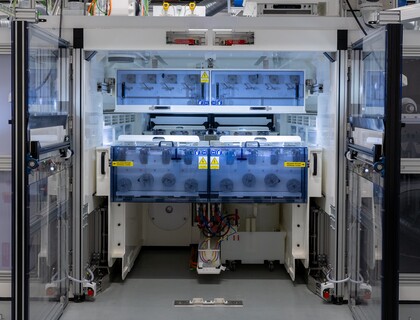
Nanofibers in Face Masks Provide Better Respiratory Protection – How Do They Work?

The coronavirus pandemic has multiplied the global demand for respiratory protective devices. Few households today do not own a supply of disposable face masks. There are functional differences between these medical devices resulting primarily from the material from which they are made. Face masks with added nanofibers offer better long‑term respiratory protection than those made from other materials.
Face Mask and Respirator – What Is the Difference Between Them?
A face mask is a disposable device that creates a barrier between the wearer’s mouth and nose and potential contaminants in the air. In contrast, a respirator acts as a “personal air purifier”. It is designed to protect the wearer from inhaling contaminants less than 100 μm in size.
Nanofibers are the leading (and most reliable) filtration material in face masks and respirators. They have a large surface area per unit weight, which increases the efficiency of capturing naturally occurring nanoparticles, such as viruses, micron‑sized particles, bacteria, or even artificial particles, such as soot from exhaust gases.
Conventional Face Mask Does Not Prevent Small Particles from Entering the Respiratory Tract
The most common face mask is the surgical mask, but this does not provide good protection against infectious pathogens. A conventional face mask consists of one, two, or three layers of fabric, usually made of paper or cotton. A “surgical mask”, by contrast, is made of a three‑layer material, such as polypropylene, that protects better.
- Surgical masks do not have adequate filtration and protection properties.
- They are not designed for multiple use.
- They are usually designed to help prevent contamination of the work environment or splashing with blood, body fluids, and other secretions that can get into the wearer’s eyes, nose, and mouth.
- The small diameter of the fibres allows for small pore size, which provides high filtration efficiency for sub‑micron particles, bacteria, and viruses.
How Do the Nano‑Masks Perform and How Are They Better Compared to Conventional Masks?
Nano masks are made of multiple layers of non‑woven fabric. These masks can have from 3 to 5+ layers depending on the specification and application. The basic type of nano‑mask consists of 3 layers: a nanofiber layer sandwiched between two spunbond/meltblown layers.
Below is an example of a nano mask composition and the results of its performance measurements. Nanofibers (made of polyvinylidene fluoride – PVDF) produced using NanospiderTM technology were used in the nanofiber, which was deposited on a polypropylene backing material and covered with a spunbond layer.

Face masks containing nanofibers have the following advantages over microfibre respiratory protection:
- The small diameter of the fibres allows for small pore size, which provides high filtration efficiency for sub‑micron particles, bacteria, and viruses.
- Nano masks can be used for up to 12 hours because the nanofilter, compared to conventional microfibre masks, does not lose effectiveness by wetting when water vapour is exhaled.
- The large surface area of the mask, coupled with its light weight and surface functioning to trap specific particles, creates a high‑quality respiratory protection device.
Additives Added to the Nano Masks Further Enhance Their Effectiveness – Which Ones Are They?
Organic additives can provide additional benefits to those already provided by the nano masks. Trends in filtration materials are increasing at a tremendous rate, with the following being among the most discussed:
Metal Additives
Metal‑enriched nanofiber membranes are effective at simultaneously filtering smoke, oil droplets, and particulate matter. A special hybrid fibre called MOF‑PAN promises to monitor fast and slow breathing to indicate the patient’s health status.
Antimicrobial Components
Membranes with antimicrobial components reliably reduce harmful particles (> 99%), and according to a 2015 study, the filtration properties of such masks improve with the addition of Al2O3 (the highest were at 8% of Al2O3). Also, the addition of aloe vera showed good antibacterial activity against E. coli and S. aureus.


